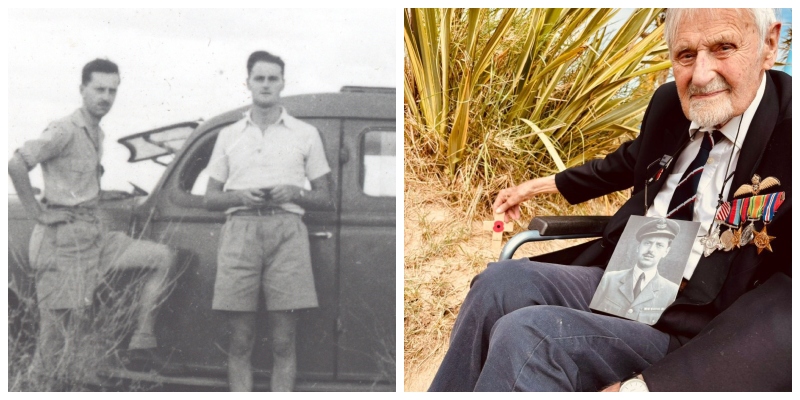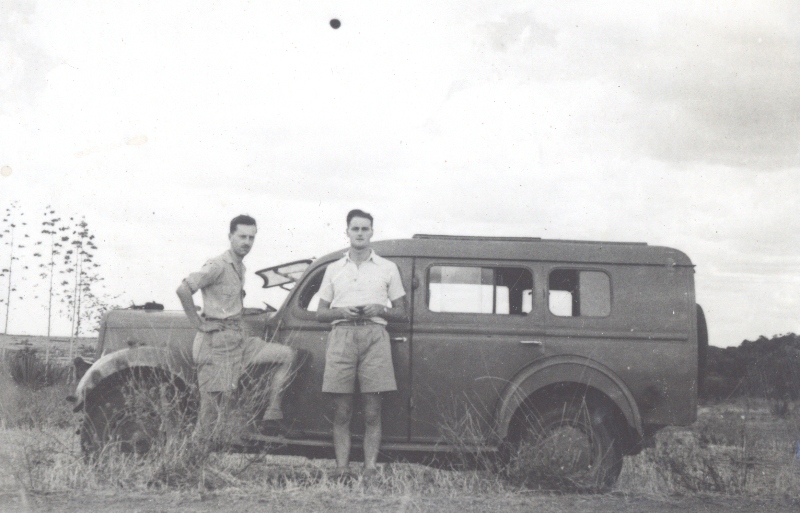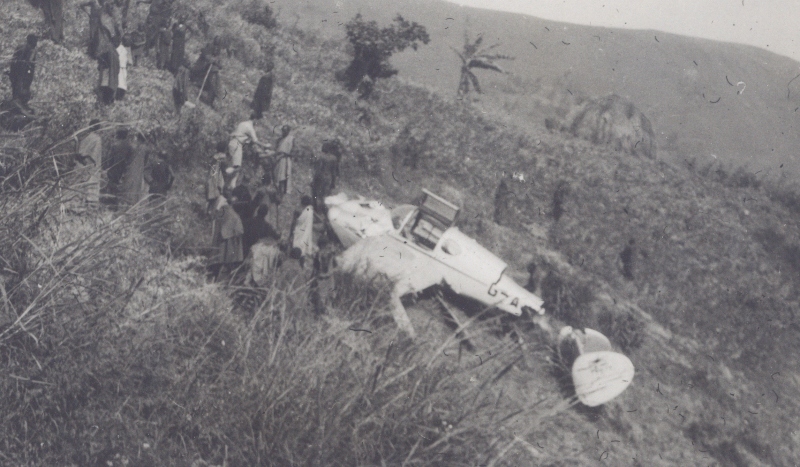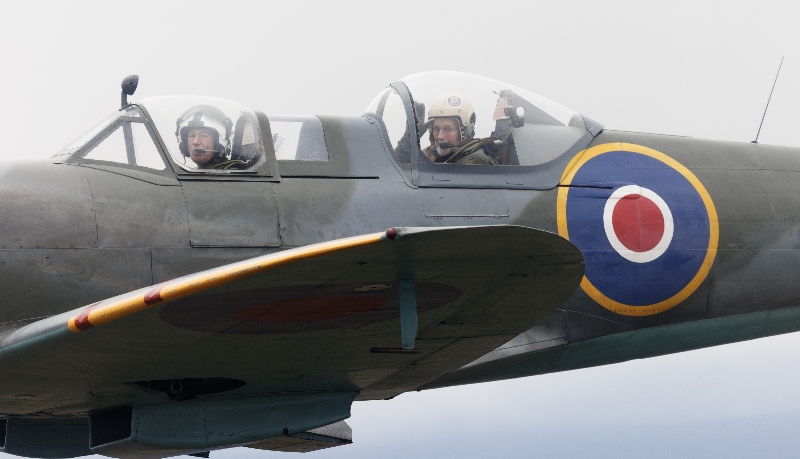Planes and plans, war and peace
Gary Clayton gives thanks for the extraordinary life and legacy of MAF (Mission Aviation Fellowship) pioneer Jack Hemmings, who died earlier this year aged 103

The plan was simple. Instead of using planes to kill both combatants and innocent civilians, Murray Kendon, an RAF Flight Lieutenant during World War II, wanted to save lives by assisting medics and missionaries serving in areas where vast distances, challenging terrain and poor infrastructure cut them off from the outside world.
After demobilisation, Squadron Leader Jack Hemmings AFC, Flight Lieutenant Stuart King, Murray and Naval Navigator Tom Banham, joined together to rally prayer and financial support to purchase a twin-engined Miles Gemini.
Commissioned by the RAF’s principal chaplain, Group Captain the Revd W R Marsh, the idea was for the plane to conduct Mission Aviation Fellowship’s first humanitarian survey of central Africa, enabling committed Christians Jack and Stuart to take Christ’s love to the farthest corners of the earth.
And so out of the ashes of World War II came a new movement - a movement that would become the world's largest humanitarian air service, delivering help, hope and healing to isolated communities.

1948 MAF survey of central Africa. Jack Hemmings (right), Stuart King (left)
Beginnings
Jack was born in Bentham, Yorkshire, on 10 August 1921 to Herbert and Elsie Hemmings. He was one of three siblings, with Frank the oldest, Pat the youngest, and Jack in the middle. A bright child, Jack gained a scholarship to Christ’s Hospital, a prestigious public school in Horsham, West Sussex. This gave him his first major adventure: he left Yorkshire for the south to board from the age of 12, and studied accountancy.
Jack soon developed a love of flying, and would go on to lead 353 Squadron in India during the Second World War, as part of the RAF's significant presence there in supporting campaigns in Asia. It was here in India in 1945 when he came across a copy of Mildmay Outlook magazine, which featured an article about launching a Christian air service. It was written by RAF Flight Lieutenant Murray Kendon – a New Zealand pilot and who would go on to become one of MAF's founders.
The article resonated with Jack, by now a committed Christian, and so on his return to London in 1946 he become a member of the 'Mildmay Movement for World Evangelisation', founded by medical missionary Thomas Cochrane. Here he would team up with Murray, Stuart and Tom.
MAF's first flights
Following its prayerful dedication at Broxbourne Airport, Hertfordshire, in 1947, MAF’s Miles Gemini toured the UK for six weeks, raising awareness of MAF’s mission. By the time the plane had visited over 30 UK locations, more than 18,000 people had heard about the exciting Christian mission.
Taking off on 13 January 1948 and flying across the Belgian Congo, Egypt, Kenya, Libya and Sudan, the aerial survey revealed the dangers and challenges of living in isolated villages.
All was proceeding to plan until the wooden ‘Mildmay Pathfinder’ crash landed in Burundi. Though the shattering descent left its wings broken, the tail snapped and the plane in pieces, Jack and Stuart carried on regardless, now travelling across Africa in a rusty jeep.

Wreckage from MAF's 1948 Miles Gemini aircraft, the 'Mildmay Pathfinder', which crash landed in Burundi
'A tiny circular brooch set in a vast land' - establishing a base
When the two MAF pioneers finally returned to London, having covered some 6,210 miles and visiting over 100 remote mission outposts, they were faced – as part of the Mildmay Movement for World Evangelisation – with either disbanding the infant organisation, or returning to the territory which they felt was calling to them – Sudan.
Fortunately, the grim-faced Mildmay Committee eventually agreed with Jack and Stuart’s peacetime plan and MAF, which eventually became independent from Mildmay, was allowed to establish its first base in Sudan; the largest African nation at the time.
MAF’s headquarters were based in Malakal, an area Stuart and Jack described as ‘a tiny circular brooch set in a vast land, barren as the surface of the moon, where the silver Nile was sketched all the way to the skyline.’
Since its tentative, precarious beginnings, MAF has grown to become the world’s largest humanitarian air service, its 115 light aircraft delivering missionaries, development personnel, aid and medicine to 2,500 of the world’s most inaccessible communities.
For those living in sun scorched plains, inhospitable desert, vast, unscalable mountain ranges or dense, impenetrable jungle, a safe, speedy, comfortable MAF flight isn’t a luxury, it’s a lifeline, and is the only way to bring help, hope and healing to those that need it.
While Stuart continued to serve MAF both overseas and in the UK, Jack – a committed supporter and lifelong friend – provided moral, logistical and financial support from the ground, having eventually returned to a career in accountancy due to his eyesight.
As the organisation’s bases expanded across Africa and the Asia-Pacific region, encompassing more than 25 low-income nations, it provided food for the hungry, clean water for the thirsty and life-saving medevacs for those needing to reach hospital quickly.
'He filled every moment he could with adventure' - Jack in later years
In 2017, at the age of 96, Jack was honoured with the Master Air Pilot Award. He’d already received the Air Force Cross in 1946 for his gallant leadership of 353 Squadron in India during the war – a role that saw him cheat death numerous times.
At the age of 100, the celebrated war hero performed aerial acrobatics in a Slingsby T64 Firefly and piloted a Miles Gemini like the one he’d originally flown with Stuart.
At 102, he flew a World War II Spitfire from London Biggin Hill, raising funds for MAF.

At 102, Jack Hemmings (right) flies a World War II Spitfire from London Biggin Hill | Credit | Jonathan Buckmaster
The need for speed and for performing daring aerial exploits never left him!
Apart from his love of flying, Jack was committed to inspiring young people and raising up new generations of pilots – volunteering as a Flying Officer with the RAF Air Cadets during the 1970s.
Towards the end of his life, Jack visited a primary school in Seabrook, Kent, to thank the pupils for raising money for MAF.
The 102-year-old also travelled to Normandy, commemorating the 80th anniversary of the D-Day landings, and celebrating Stuart’s role there as an RAF Engineer Officer with 247 Fighter Squadron (pictured at the top of the page).
‘Stuart,’ Jack remarked, ‘was a great friend and a man of vision, devoted to MAF since the early days in 1947. If Stuart were here today, I’d say to him: “Stuart, you done good!”’
Though Jack had other, exciting plans for the future – and wanted to pilot more planes – on 24 January 2025, the centenarian passed away peacefully at the age of 103, dying in hospital in Eastbourne, Sussex.
His son Adrian said, ‘We’d been brought up on his stories, but when you look at them in detail, you realise what he’s achieved.’
For Adrian’s children, William, Beatrice and Olivia, their grandfather was a man of ‘boundless energy, joy and love, who filled every moment he could with adventure.’
Though Jack’s particular adventure has come to an end, MAF planes continue to take to the air – the 80-year-old aviation organisation formulating ambitious plans to increase its reach to the world’s poorest and most vulnerable people.
Jack, Stuart, Murray and Tom are sadly no more, but MAF remains, and is still very much alive!
Gary Clayton, a member of Hayes Lane Baptist Church, Bromley, is copywriter and editor at Mission Aviation Fellowship
Top image, right | Jack Hemmings on Gold Beach, Normandy, France for 2024 D-Day anniversary | Credit Jo Lamb
Do you have a view? Share your thoughts via our letters' page.
Baptist Times, 30/04/2025